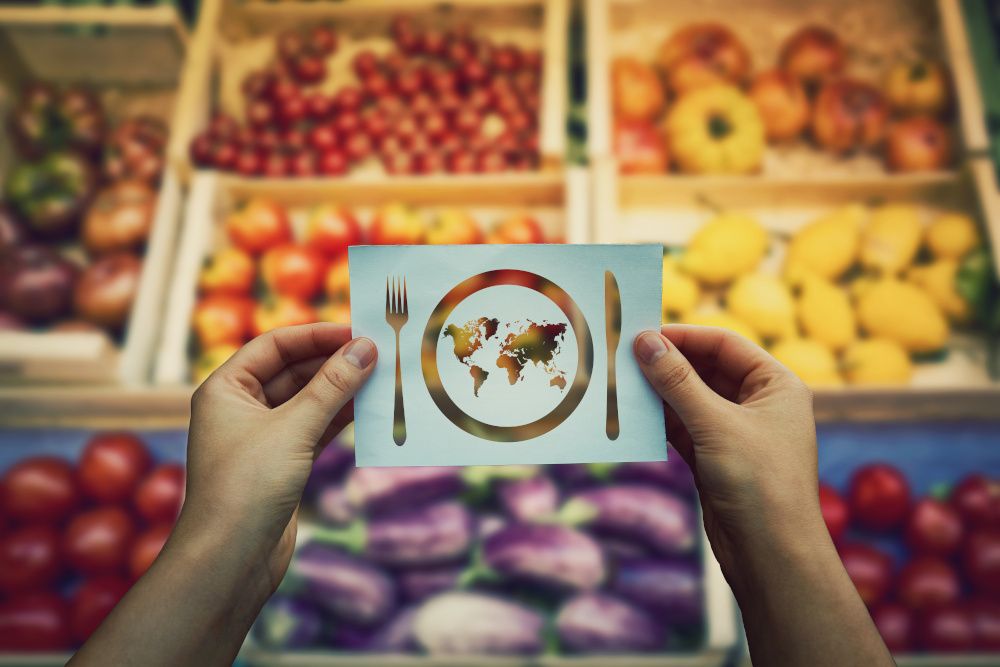Today’s global shocks are hitting a food supply chain already under duress, says IFT FIRST panel. How do we dig our way out?
A panel of supply chain experts discussed how technology, relationships, and long-term reprioritization will be key to solving global food supply chain problems.
The global food supply is drowning in problems. From inflation, spiking fuel costs, and the cost of war to ongoing shipping- and pandemic-related struggles, there’s no shortage of supply chain crises. To dig ourselves out and to safeguard the future supply, industry stakeholders need to do more than simply be reactive, advised experts during July’s IFT FIRST Annual Meeting and Expo during a panel discussion titled “Rearranging the Dominos: How Food Development Is Responding to Inflation and Supply Chain Challenges.”
“What we’re seeing is a perfect storm,” said panelist Ken Harris, managing director of Cadent Consulting Group who previously served as chairman of Enjoy Life Foods. “It’s a series of things. I think that everybody in the audience is pretty clear that—between the supply chain issues, the current economic conditions, the war in Ukraine, resurging COVID—this all contributed to where we are today.”
The panelists agreed that the current challenges in the food supply chain were a long time coming. “There’s been a perfect storm over the recent months and maybe a year, but I do think this has been building for the last 20 years,” said panelist David Godfrey-Thomas, president and CEO of Afina International. “We’ve become extremely used to inexpensive foods and ingredients. We’ve become very used to industrial agriculture without any concern for climate change. So, the proliferation of all of these bad habits…have accumulated recently, and the shocks have only exacerbated it. But it wasn’t as if a problem did not exist before that.”
Everyone in the supply chain now needs to commit to ongoing change to address long-term problems such as climate change that have the potential to rock the industry long after shorter-term shocks like inflation pass. Godfrey-Thomas advised, “I think the…thing to avoid strategically in thinking about how we solve these issues is getting bogged down in the immediate pressure of the crisis of availability and price that’s caused by the war. That is a short-term problem. It’s brutal, but short-term. Inflation is medium-term. But coming down the pike are all the issues of climate change, which will make these two short-term issues, or medium-term issues, look like a drop in the bucket in terms of what they’re going to do to supply chains.”
At some point, the food supply chain stopped thinking of itself as a “global ecosystem,” said panelist Gary Iles, senior vice president of marketing and business development for supply chain technology company TraceGains.
The current crises also remind us of how “interconnected” the global food supply chain is, Harris said, adding, “because if China shuts down, we can’t operate as a normal supply chain.”
Long-Term Solutions
The panelists then discussed what macro-changes are needed in how we view and treat the supply chain.
Future planning should include everyone along the supply chain. For instance, said panelist Jeff Grogg, managing director at JPG Resources, “In the food industry, we talk a lot about [agriculture], but we don’t always involve the farmers and the ranchers in those discussions. We talk about organic and [regenerative agriculture], and brands are marketing [those values] a lot, but they’re often not very involved in the solutions required to make the change at the field level. And I think that we’re all going to have to be more involved in…creating a robust and interconnected ecosystem instead of an ecosystem that’s very transactional.”
Technology also has a big role to play. “We think technology is the answer to a lot of these problems,” said Iles. “Technology creates two very fundamental things: First, it gives companies the ability to be very, very agile in what they’re doing. Second, it creates tremendous efficiencies which combat not only inflation but [also] labor markets, etc.” Early-stage innovators will continue helping larger companies find solutions, Grogg said, noting “I do think that evolution of strategics and larger companies partnering…around technology solutions, food waste, and other things is going to continue and accelerate.”
Companies will also learn to better define their product lines and target customers. When deciding which products to develop in light of supply chain constraints, they should be thinking about what they can really commercialize. “If you’re not designing from day one with an eye toward commercialization, you’re missing the boat and you’re wasting time,” said Grogg. “I think that a lot of times, when times are good in the industry, we indulge ourselves [with] a lot of messing around at times or flights of fancy. I think that in these kinds of times, it really makes sense to be focused on getting it to market, and not just having fun in the lab.”
Companies are also learning to streamline formulations and product lines. Iles said that in a survey his company recently distributed, it found that “almost half of those companies [felt] like they’re going to need to change their products—either eliminating products and going to efficiencies there, or reformulating products or reformulating on the fly to deliver product to market so they can keep brands on shelves.”
Grogg agreed that more companies he works with are looking to “formulate [a product] way down so we can stretch supply. Let’s simplify from 18 ingredients to 14 ingredients. Let’s have fewer SKUs. So, simplicity, resiliency. Those should be takeaways that we cling to for a while and make our companies healthier and more able to work through some of these problems.”
Companies are also keeping a tighter focus on their core consumer. “I think one of the things we’ve seen as a challenge for brands…[is that] they don’t work to really understand the tight bandwidth of who their core consumer is,” said Harris. He noted that a company he works with “talks about [how] they innovate for the 1%, and the rest of the 99% will follow. And in doing that, it [allows the company to be] laser-focused on the consumer and to be able to deliver against that.”
Finally, companies are strengthening their supply networks by forging new connections. Iles said that in the survey his company conducted, “we found that over the next 24 months, companies are going to be looking to increase their supplier network.”
Unfortunately, the challenges facing the global food supply chain will persist. “I think that things are going to continue in this vein for a good time to come,” Harris said.
But these challenges will also teach valuable lessons. “I think we’re going to see some new winners coming out of this,” Godfrey-Thomas predicted. “One of the characteristics of these new winners is an ability to comprehend the need for a real, radical realignment, geopolitically, of the supply chain. That’s going to encompass being much more international, much more engaged, and much more partner-focused, but also incorporating the consumer demand for entirely different kinds of foods. That’s going to throw another dimension into the way we think about sourcing and supply, which I think is healthy.”

Prinova acquires Aplinova to further increase its footprint in Latin America
April 7th 2025Prinova has recently announced the acquisition of Brazilian ingredients distributor Aplinova, which is a provider of specialty ingredients for a range of market segments that include food, beverage, supplements, and personal care.
























